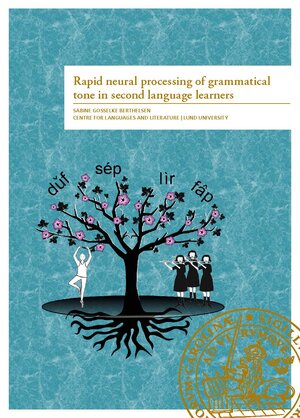Series
Sabine Gosselke Berthelsen
Rapid neural processing of grammatical tone in second language learners
2021
| 196 p.
|
English
ISBN: 978-91-89213-39-5, 978-91-89213-38-8
Learning a second language can feel like a slow and tedious process. Yet, the human brain starts segmenting and categorising new language input virtually from the very second that it is exposed it. It supposedly does so based on what it currently knows about how languages sound and how they are structured. The present dissertation investigates the suggested importance of familiarity with the properties of a new language in early stages of language learning. It focuses primarily on the feature of grammatical tone, that is, a systematic change in pitch associated with grammatical function. For example, different pitch patterns might be related to singular and plural interpretations of nouns. In four papers, the thesis examines the acquisition of grammatical tone both in a natural language (Swedish) and in strongly controlled, artificial words. With the help of electroencephalography (EEG), it explores how learners from a tonal and a non-tonal language background process the novel tonal information in correct and mismatched contexts during learning. Analysing different processing steps related to varying degrees of automaticity, the present dissertation shows how the processing of foreign words is affected by the similarity between native and foreign language, how tone influences the speed of second language processing, and what role mismatches (or violations) play in this context. The findings underline the importance of familiarity with the sounds of a new language, strengthen the proposition that second language tone might generally be difficult to process, and question the use of violation paradigms when studying second language learners. The dissertation contributes to the understanding of how quickly second language learners process new language input and how the automatic segmentation of novel input crucially depends on familiarity with the new language’s properties.

